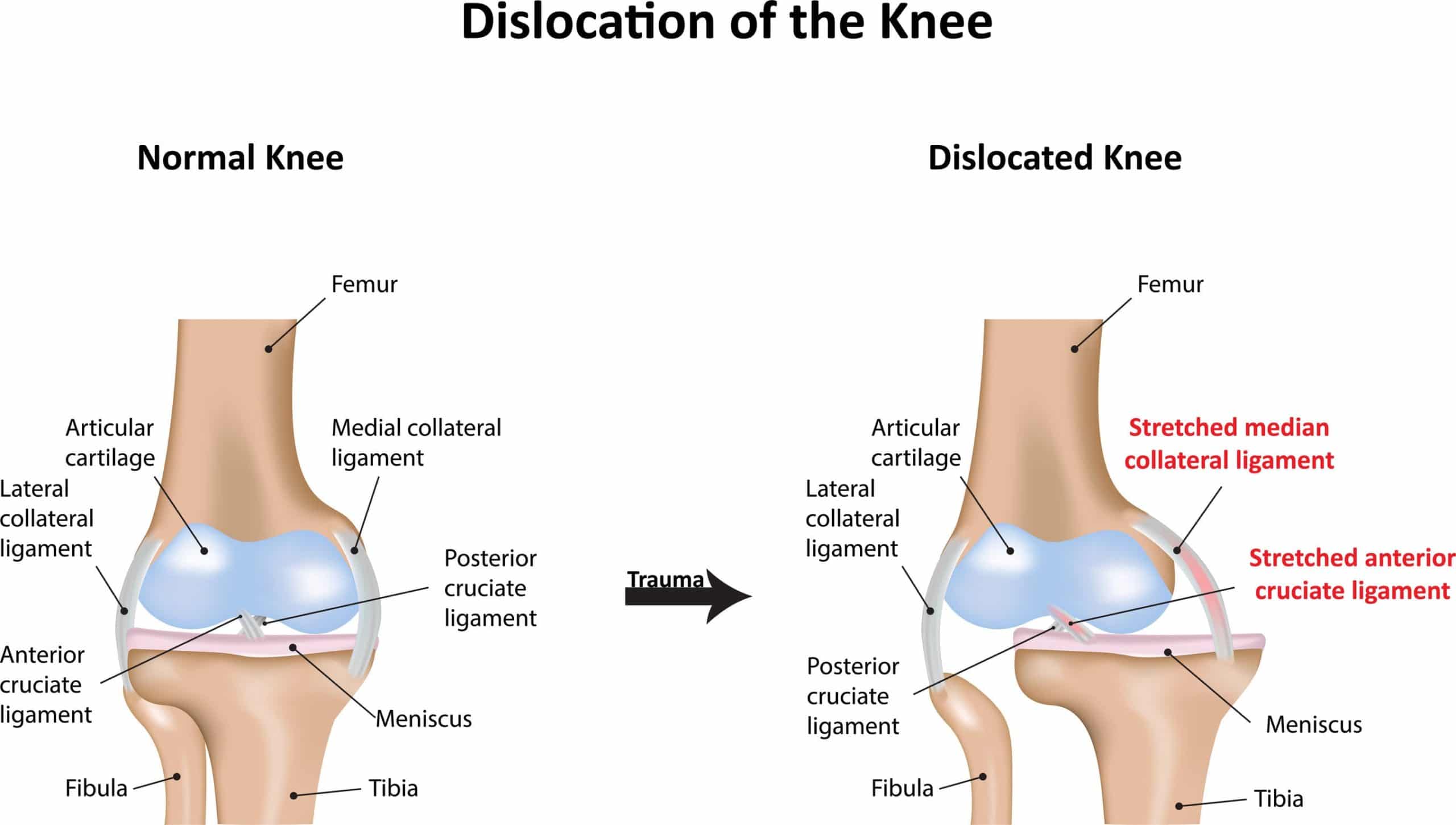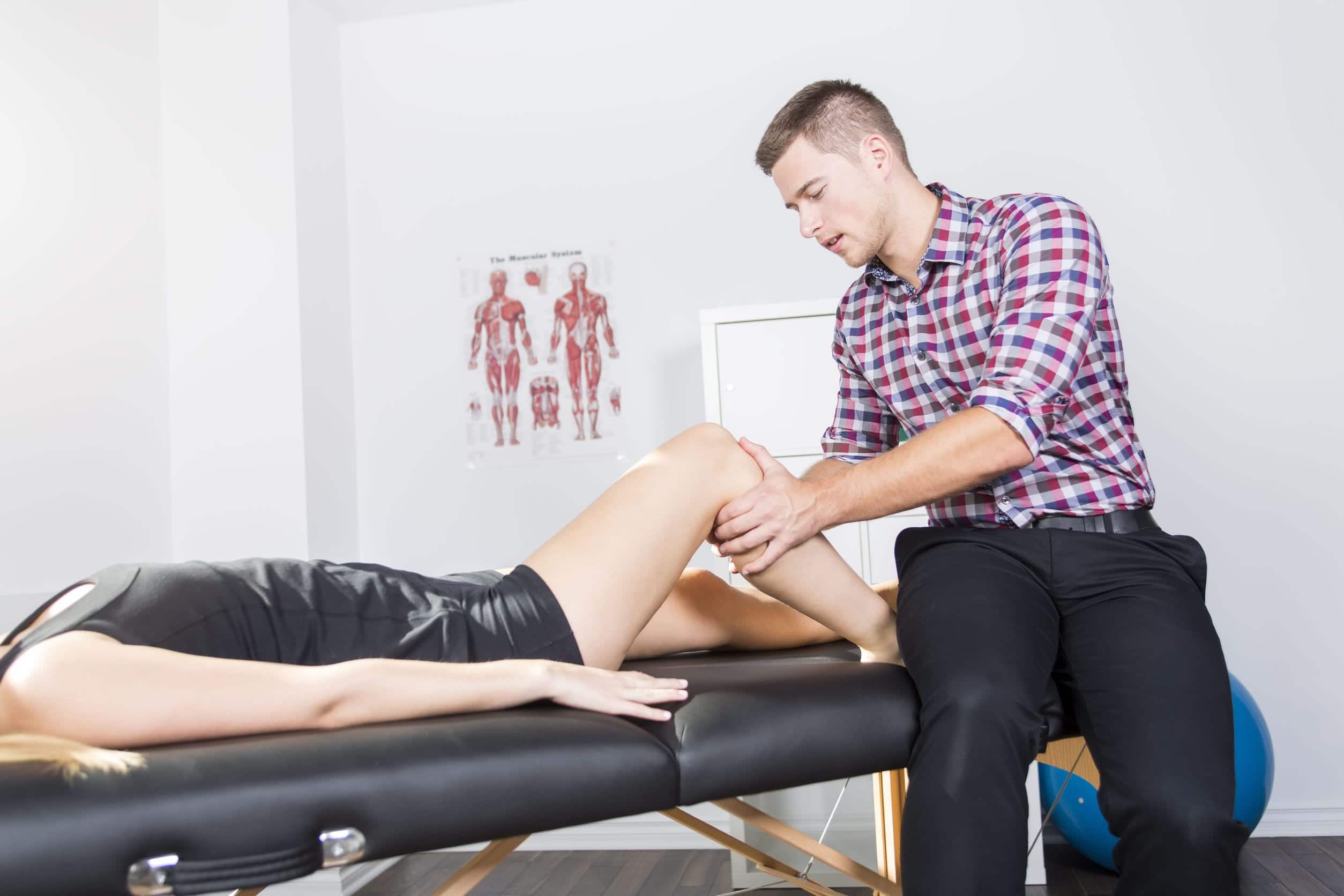PREVIOUS POST
Sciatica Treatment - When a Chiropractor Makes Sense

Please fill out the form below and we will be in touch soon.

Sciatica Treatment - When a Chiropractor Makes Sense

Physical Therapy Can Help With These Types of Accidents

Knee pain is nearly always caused by imbalance and misalignment. Muscle asymmetry and structural misalignments from the waist down (including your hip, knee, and ankle joints) can result from poor posture, repetitive stress, and physical trauma.
Sometimes, simply making an appointment with your chiropractor to adjust the spine, hips, and knee joints can offer immediate relief.
In today’s post, we’ll take a closer look at common knee injuries, when you should consider seeing a chiropractor for treatment, and what kind of help you might expect from your visit. First, though, we’ll answer this…
Why Is the Knee So Vulnerable to Injury?
Understanding the basic anatomy of the knee can explain quite a bit in the way of its vulnerability to pain and injury.
First, it’s the largest joint in the body, and encompasses a complex system of bones, cartilage, ligaments, and tendons. Quite simply, the more parts in a machine, the greater the chance of something breaking down.
The knee is also a hinge joint. Unlike those joints designed for 360-degree radial movement, the knee is really only meant to bend one way. Hyperextension in any direction can cause immediate pain and swelling.
Your knees also bear all the weight of two-thirds of your body. Think about your daily habits and routine – how much walking, running, jumping, and carrying of heavy objects would you personally need to factor in? Then add any family history of arthritis or other degenerative condition. If you’ve got any, your chances of knee pain and injury skyrocket.
Not sure if you’ve got a “real” injury?
Any pain or swelling around the knee are signs and symptoms of too much strain, or even injury. Other signs include a feeling of instability or your knee “going out,” or it may feel like it’s locking up or unable to either straighten completely or bend.
Causes of knee pain can run the gamut, but these issues are often linked to one of three types of injury. By taking simple measures – wearing a sleeve or other type of brace, and following a rehabilitation exercise routine – you can recover from many of them successfully.
Although we only recommend invasive procedures for worst case scenarios, severe injury may require surgery to correct.
There are three primary bones that meet within the knee joint – the femur (thigh bone), the tibia (shin bone), and the patella (kneecap) – and all of them are vulnerable to fractures.
We most often see this injury occur during falls and car crashes.
These same three bones can also abnormally shift out of normal placement. When this happens, it’s known as a dislocation, and can be quite painful.
Most often, this occurs during sports-related activities where hyperextensions and rapid weight distribution changes take place.

There are three primary ligaments which connect your leg and knee bones. They are the anterior cruciate (ACL), the posterior cruciate (PCL), and medial collateral (MCL) ligaments.
Your ACL crosses over your PCL, and injury of either will result in pain on the front. The MCL, located on the sides of your knees, may be responsible for pain there.
All of these injuries and other types of strain can lead to favoring one side of the body, which can lead to pain and strain in other areas of the body, such as your hips, lower back, and even neck and shoulders, believe it or not.
So, how do you know whether you can safely manage a condition at home or you should see a chiropractor for additional help recovering?
Knee deterioration can occur due to a single injury, but more commonly it comes on gradually. You may not even realize it’s affecting your normal mobility and everyday functioning.
We recommend taking a moment to give yourself a gut check. Ask yourself, “Are my knees really okay?” There are a number of key indicators telling us the answer is no, they are not okay, and it’s time you seek treatment.
They include, but are not limited to:
If you are experiencing any of these issues, seek the advice of a medical professional. You may choose to speak directly with a chiropractor or discuss your symptoms with your general practitioner first.
Either one will be able to provide the guidance you need regarding whether chiropractic treatment might be a great, non-invasive option for you.
Often, a licensed chiropractor can identify and address underlying issues causing your knee pain (unless caused by acute injury, which we’ll address further down).
A number of manipulation techniques can be combined for a treatment plan that alleviates part or all of your immediate pain while you are improving stability in your knee.
Components of treatment specific to common symptoms in the knee include:

Apart from treating the knee directly, your chiropractor will investigate other aspects of your alignment, which can directly affect knee function.
About the Author:
Dr. Singer has been a practicing chiropractor for more than 20 years, and USA Health & Therapy has been around since 2004. Over the course of his career, Singer has helped tens of thousands of people with all kinds of issues by using a wide variety of treatment strategies. He has extensive knowledge of chiropractic modalities, including Gonstead, Diversified, Thompson Drop Table, and Activator, and in 1997 he earned a special adjunctive Chiropractic Certification in Spinal Trauma (CCST) to better provide care for car crash victims. Dr. Singer is licensed to practice chiropractic medicine in both Florida and New York.